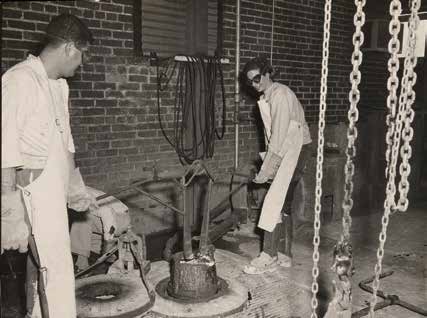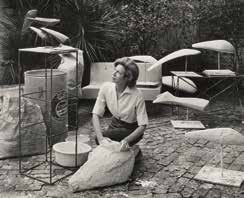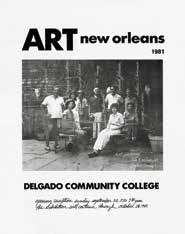
Poetry in Motion
Lin Emery Papers
gift of Brooks Emery Braselman, 2022.0005
Lin Emery (1926–2021) was an internationally recognized kinetic sculptor and a New York native who spent much of her adult life in New Orleans. Her father passed away when she was very young, and her mother suffered from mental health challenges, so Emery was raised primarily by her caregiver, Bertha F. Oliver, with whom she first came to New Orleans in the 1940s. She began her college education at age 15, enrolling at Columbia University before studying at a series of institutions around the United States and Mexico. By the late 1940s, she was living in Paris, attending the Sorbonne and taking evening classes at the renowned Académie de la Grande Chaumière. It was in Paris that she first trained as a sculptor, with Ossip Zadkine.
By the early 1950s, Emery returned to New Orleans. Looking to expand her experience with different sculptural materials, she took a job as a studio assistant with Enrique Alférez. Knowing she wanted to work with metals, she sought out welding lessons but was rejected by Delgado Community College because of her gender. In 1952 she left New Orleans to study at the Sculpture Center in Queens, New York, where she learned both welding and casting. Over the following years, she traveled between New York and New Orleans. Her earliest works displayed in New Orleans were religious sculptures done for churches around the region. She was actively engaged in the New Orleans art scene early on, helping to found the Orleans Gallery in 1956.

Emery’s sculptures were inspired by nature, and the movement of some of her earliest kinetic sculptures was powered by natural elements including water and wind. Later pieces featured movement powered by magnets, other mechanical means, and electricity. Her collection at THNOC, recently donated by her son, Brooks Emery Braselman, includes two finished sculptures—Gathering (2018), a wind-powered piece, and Medusa (ca. 2020), which was the last artwork she exhibited. Researchers can follow her creative process for these artworks from start to finish within her papers in the collection: files contain preliminary sketches, technical schematics at various stages of construction, and extensive photo and film documentation. Particularly notable are four complete three-dimensional paper models of her finished sculptures, created early in her construction process.

Given her long and prolific career, her papers are voluminous and paint a picture of both her attention to detail and her business acumen, with files that include correspondence, detailed notes, and budgets for small- and large-scale projects completed around the country. One particularly well-documented project is her work carried out on behalf of the city of New Orleans to construct a memorial to Mayor deLesseps “Chep” Morrison (1912–1964) following his death in a plane crash. These files capture all the stages of the project, which was completed between 1966 and 1971 and comprised 13 water-powered sculptures and a 40-foot obelisk.
Also present is photo documentation of her world travels and education, including images of her learning to weld at the Sculpture Center in New York. Her general correspondence files document her work with other artists, her development of a robotics company, and the lasting impact she had on New Orleans as a founding member of the Contemporary Arts Center.
—AIMEE EVERRETT for HNOC